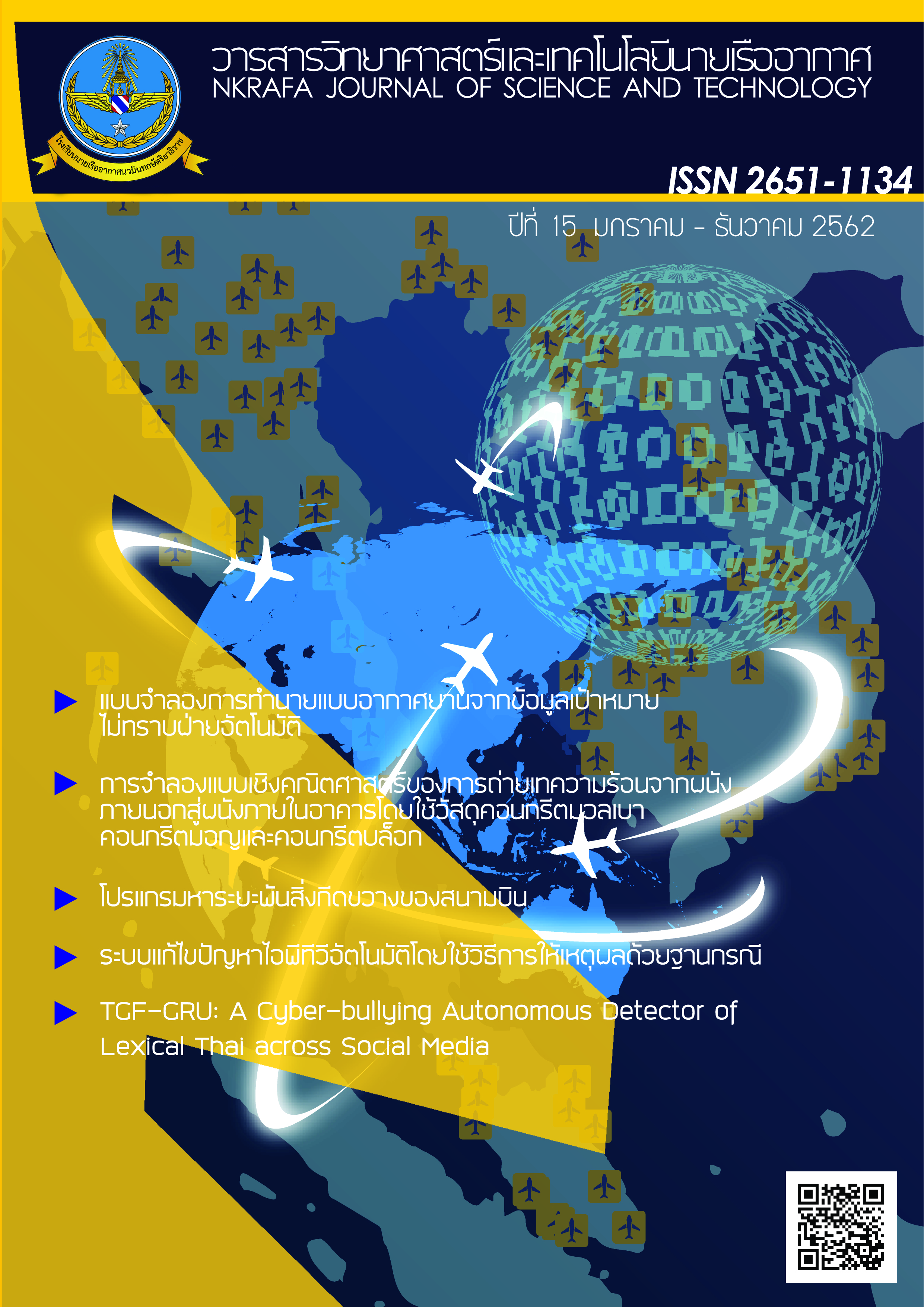Mathematical Model of Heat Transfer from External Wall into Interior Wall by Using Lightweight Concrete, Brick and Concrete Block
Main Article Content
Abstract
One of the crucial factors that affects significantly the highly energy consumption of air-conditioners in building, is the temperature inner and outer of walls. The highly requirement of energy is typically due to the heat transfer from Sun-heat through the outer surface into inner surface of the walls. In order to decrease the energy consumption used by air-conditioners, the current study applied the mathematical model to calculate the temperatures within the walls made of three different materials; concrete, bricks and concrete blocks. This study evaluated the different thickness of each wall materials which were 20, 30, and 40 centimeters respectively with different thermal conductivity as well as material density. By using one-dimensional heat equation as a governing equation used to describe the heat transfer from outside to the inside of the wall and to the inner surface of the wall and using finite difference method to solve the governing equation. The results showed that the lightweight concrete wall has the lowest heat transfer that would be recommended to use as a wall material.
Article Details
- Content and information in articles published in NKRAFA Journal of Science and Technology are comment and responsibility of authors of articles directly. Journal editorial do no need to agree or share any responsibility.
- NKRAFA Journal of Science and Technology Articles holds the copyright of the content, pictures, images etc. which published in it. If any person or agency require to reuse all or some part of articles, the permission must be obtained from the NKRAFA Journal of Science and Technology.
References
จรัล รัตนโชตินันท์และพิธาน ไพโรจน์. (2016). การเปรียบเทียบประสิทธิภาพการใช้งานคอนกรีตมวลเบาแบบมีรูกลวงกับคอนกรีตมวลเบาแบบปรกติ. EAU HERITAGE JOURNAL Science and Technology, 10(3).
สุวัฒชัย ปลื้มฤทัยและโยธิน อึ่งกูล. (2554). การพัฒนาคอนกรีตบล็อกจากผักตบชวา. การประชุมวิชาการบัณฑิตศึกษาศิลปากรระดับชาติ/นานาชาติ ครั้งที่ 2. นครปฐม: มหาวิทยาลัยศิลปากร.
อมลวรรณ แสนนวล, ศุทธา ศรีเผด็จและชนินทร์ ทิพโยภาส. (2559). การศึกษาการถ่ายเทความร้อนผ่านผนังอาคารกรณีศึกษาวัสดุไม้ประกอบพลาสติก. วารสารวิชาการ คณะสถาปัตยกรรมศาสตร์ มหาวิทยาลัยขอนแก่น, 15(2).
โยธิน อึ่งกุล, พิชัย นามประกาย, นริศ ประทินทอง และรังสิต ศรจิตติ. (2006). แบบจำลองทางคณิตศาสตร์การถ่ายเทความร้อนและความชื้นในบ้านที่ใช้ผนังคอนกรีตมวลเบาภายใต้สภาวะอากาศของประเทศไทย. KKU Engineering Journal, 33(4): 375-390.
Gerald W. Recktenwald. (2000). Numerical Methods with MATLAB: Implementations and Application. United States of America (USA).
Mitchell A. R. (1969). Computational Methods in Partial Differential Equations. United Kingdom, John-Wiley and Sons.
Rattanachotinun, J. and Pairojn, P. (2016). The assessment of effectiveness and practical feasibility of glass solar chimney walls for tropical area, case study. Bangkok. Thailand. International Energy Journal, 14(1): 95-106.
Louise Olsen-Kettle. (2011). Numerical solution of partial differential equations. Australia.
Matthew J. Hancock. (2006). The 1 D Heat Equation. United States of America (USA).
ข้อมูลคุณสมบัติของผนังคอนกรีตสำหรับธุรกิจการผลิต บริษัทไซมีส อีโคไลท์ จำกัด. สืบค้น 7 พฤศจิกายน 2560, จาก http://www.ecolite.co.th
ข้อมูล อิฐบล็อก อิฐมวลเบา และอิฐมอญ บริษัทผลิตภัณฑ์ตราเพชร สืบค้นเมื่อวันที่ 9 เมษายน 2562, จาก http://blog.dbp.co.th/


